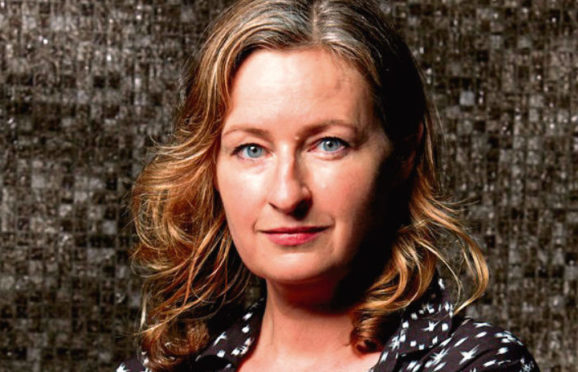
Falling foul of the law put Louise Candlish on course to become a top crime-writer with a hat-trick of novels destined for the screen.
Louise, 51, confesses: “I was a borderline juvenile delinquent. I was 11 and in a shoplifting ring in my local town.
“We were found out and got into trouble with the school and the police.
“My parents grounded me for the whole of the summer holiday. The only place I was allowed to go was the library. That is when I began reading The Complete Works of Agatha Christie and started writing.”
But it wasn’t until she hit her 30s that she penned her first novel. It was the start of a roller coaster career, which after 11 books, saw her in 2016 ready to give up, describing herself as “midlist and middle-age.”
The turning point came with a shift to her current publisher and the launch of Our House, which won The British Book Awards Best Crime Novel for 2018.
Both it, and the subsequent Those People are now being considered for film, while her latest offering, The Other Passenger (out on June 25) is being scrutinised by TV producers.
It’s a chillingly addictive and glamorous thriller, set on and around London’s famous river, and as murky as the Thames itself, with a disturbing denouement that would keep Christie herself guessing.
The writer, a Geordie mum of one, who says she’s “at home” in the Scotland she has visited since childhood, reveals: “Becoming an author was smooth and easy, but there were ups and downs. I nearly gave up.
“I had two books – The Swimming Pool and The Sudden Departure Of The Frasers – that were really good, but then nothing happened.”
Then she read a newspaper article about the theft of a home that inspired Our House.
“It was a life-changing moment and an incredible idea for a novel,” she says. “I thought, ‘I’ll raise my game and if that doesn’t work I’ll slink away and become an Uber driver. That really was my last shot.”
It paid off. Her new novel seems set for equal success. Cue Gen-X couple Claire and Jamie (“the haves”) and their new friends, the beautiful Millennial pairing of Kit and Melia (the “have nots”). Kit and Jamie become pals on the riverboat they share to work each day, until Kit disappears. Jamie was the last person to see him. Suddenly fingers start pointing.
South London-based Louise says: “I had never done a commuter based story, but we’d already had The Girl on the Train and I didn’t want to go into train territory.
“One day I was travelling on the river bus on the Thames to the O2 and thought it was an amazing setting for a thriller. Another strong element in the book was the generational conflict.
“When you’re older you know nothing is as covetable and gorgeous as just being young.
“But the young want the Gen-X house and lifestyle – except they don’t really want to work that hard for it.”
The author is proud to be a judge at this year’s British Book Awards. And she is a keen supporter of Quick Reads, an initiative relaunched this year by fellow novelist Jojo Moyes to make reading accessible to adults who find it difficult.
She reveals: “I feel passionately about improving literacy, partly because reading saved my skin when I was that slightly naughty 11-year-old.”
Louise Candlish, The Other Passenger, Simon & Schuster, £14.99.

Enjoy the convenience of having The Sunday Post delivered as a digital ePaper straight to your smartphone, tablet or computer.
Subscribe for only £5.49 a month and enjoy all the benefits of the printed paper as a digital replica.
Subscribe